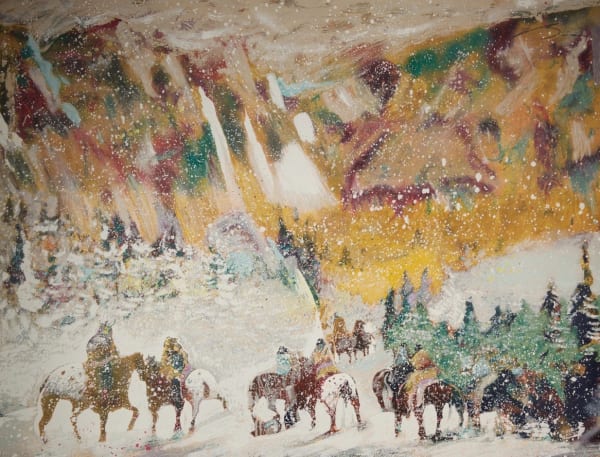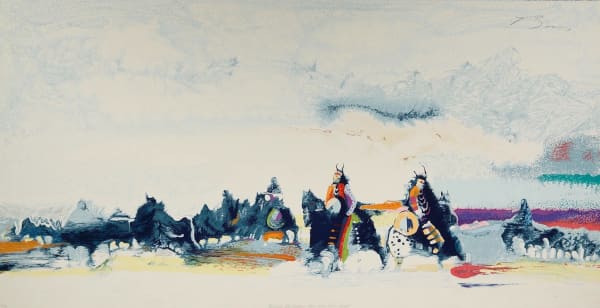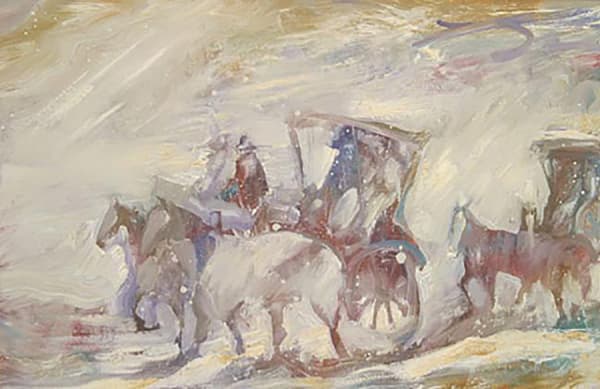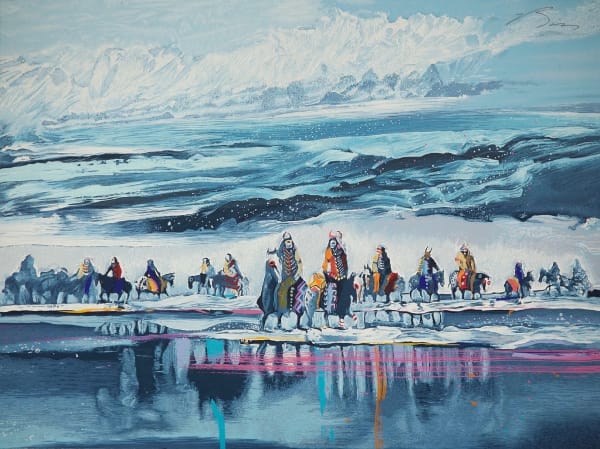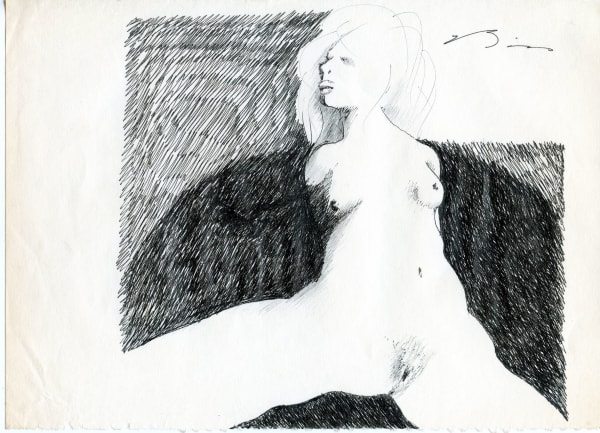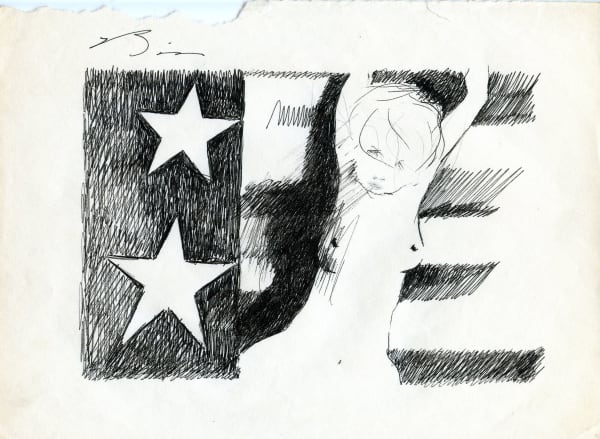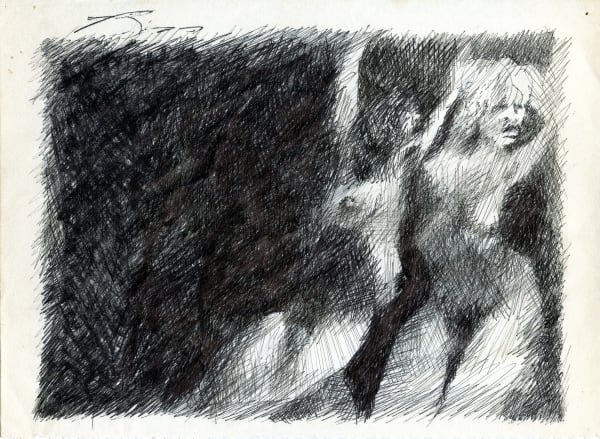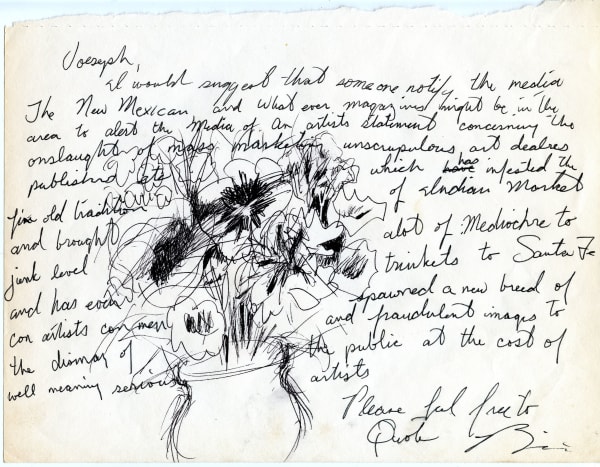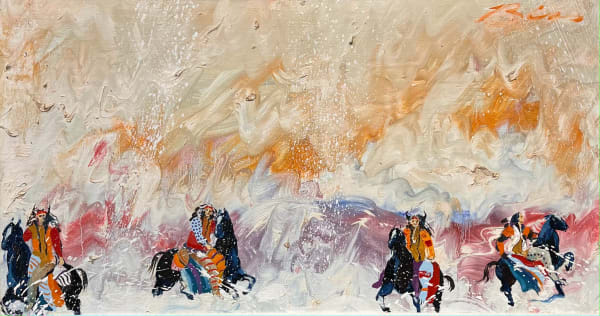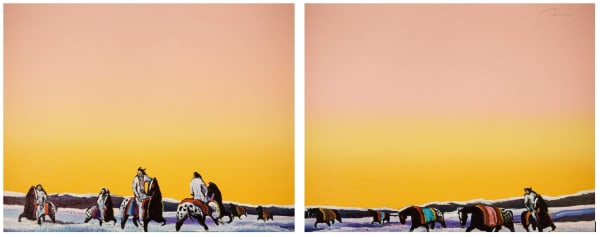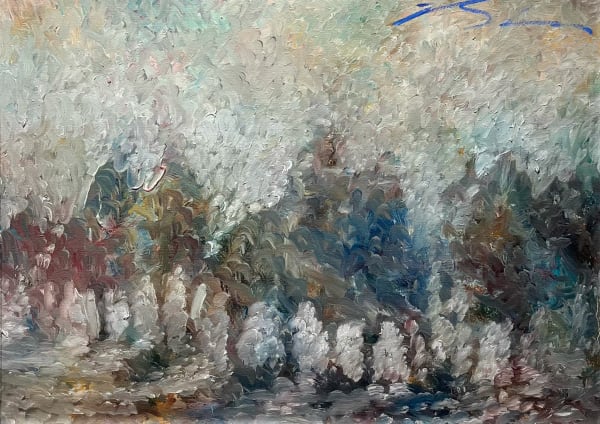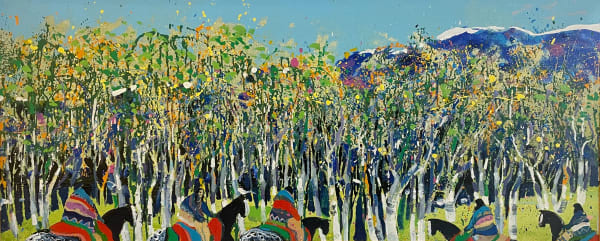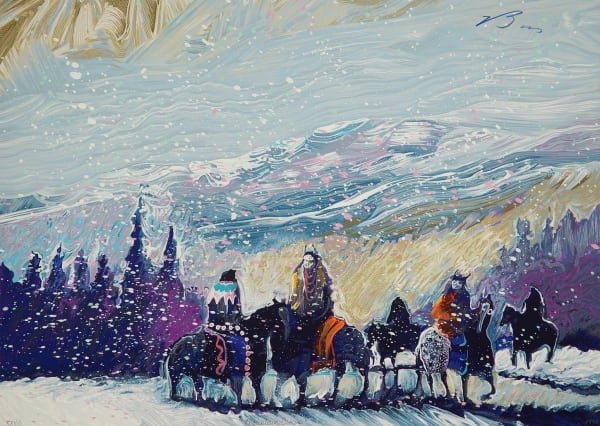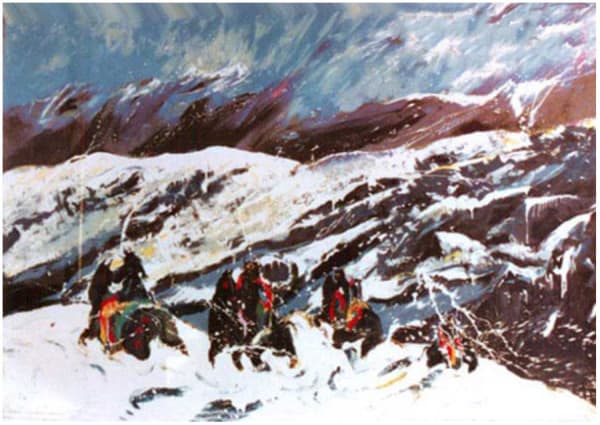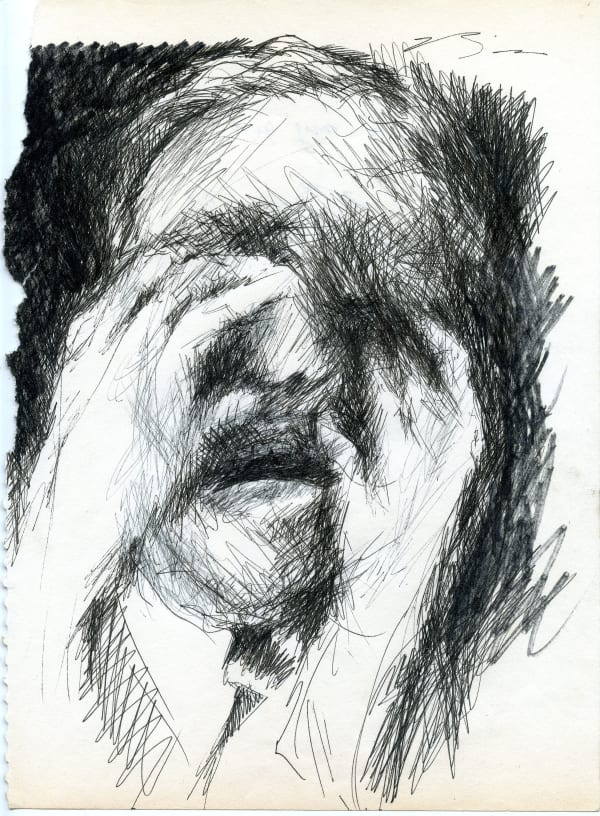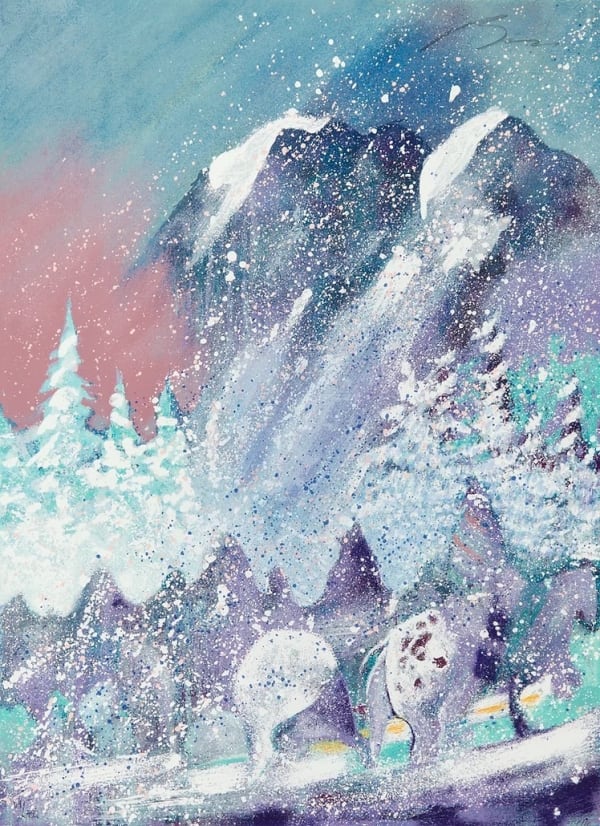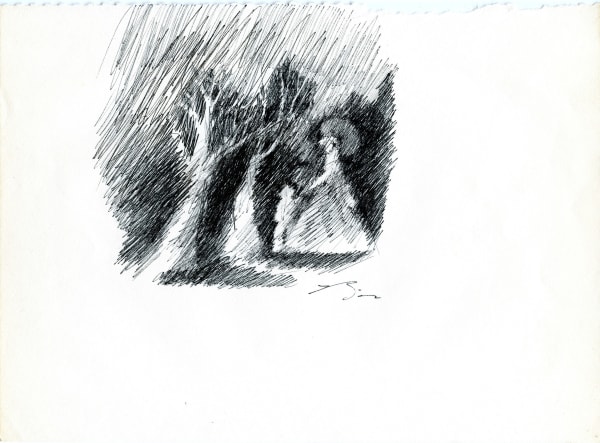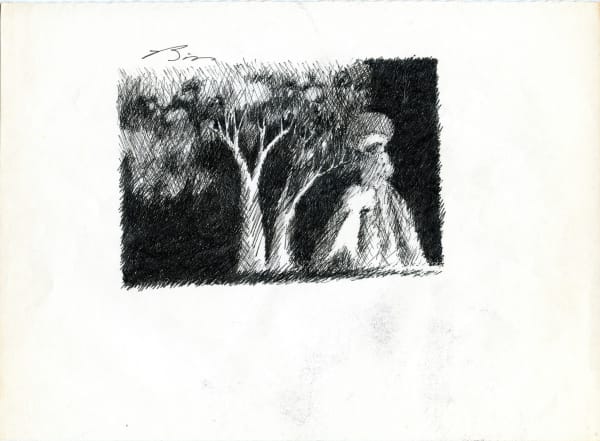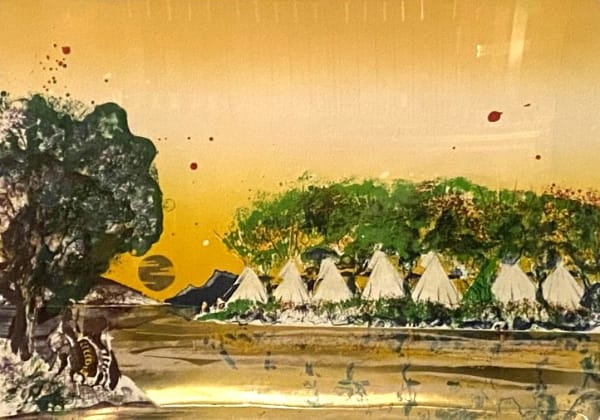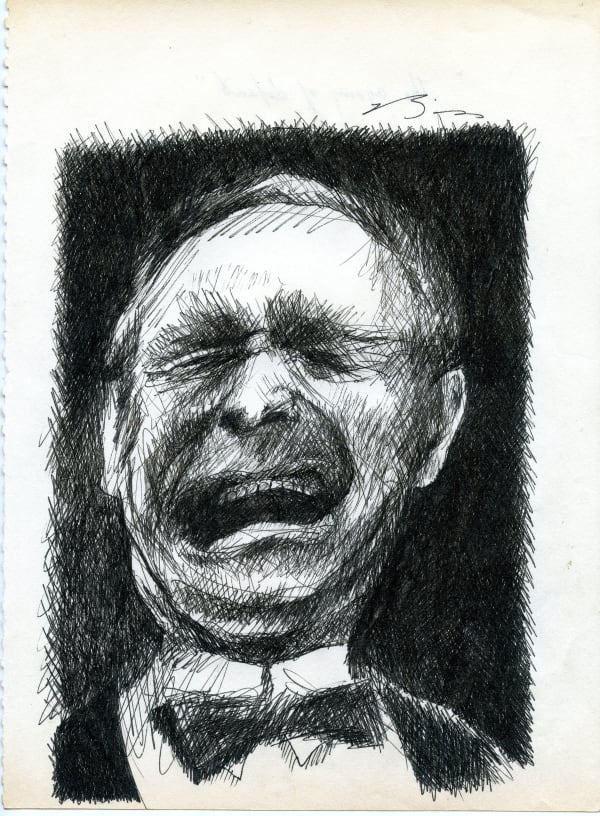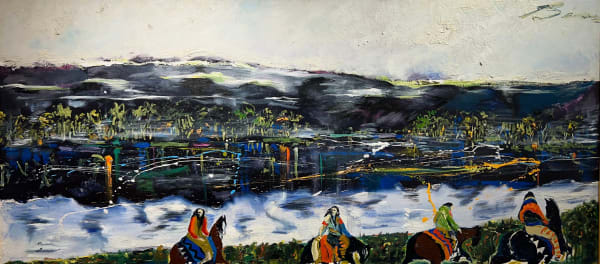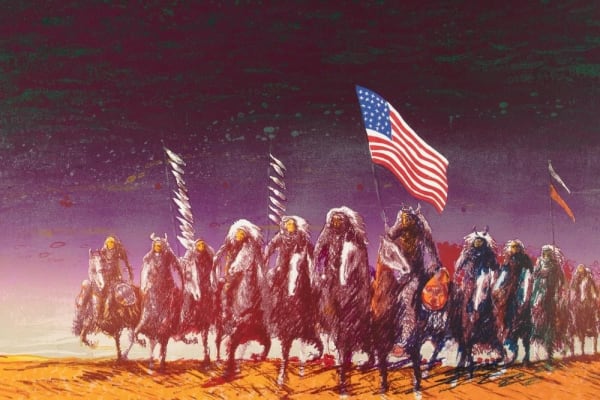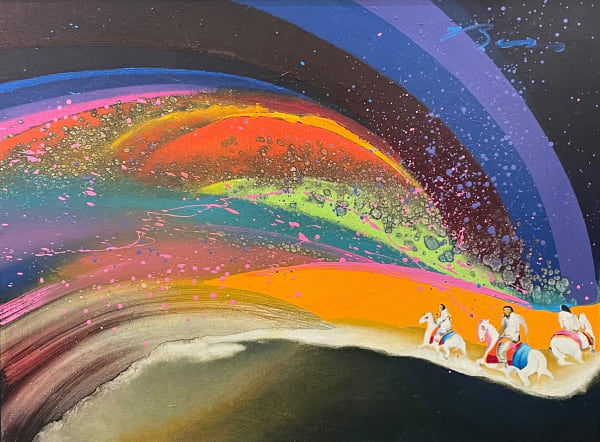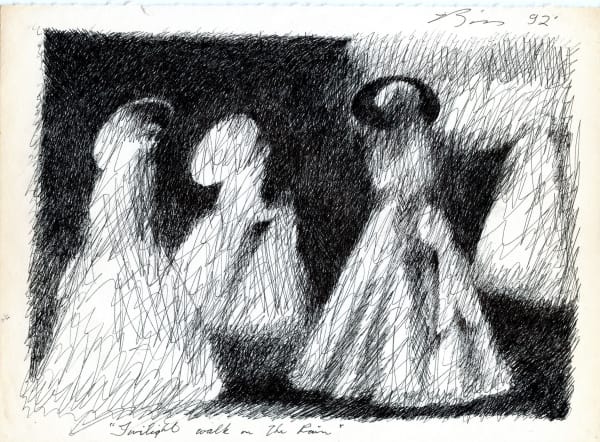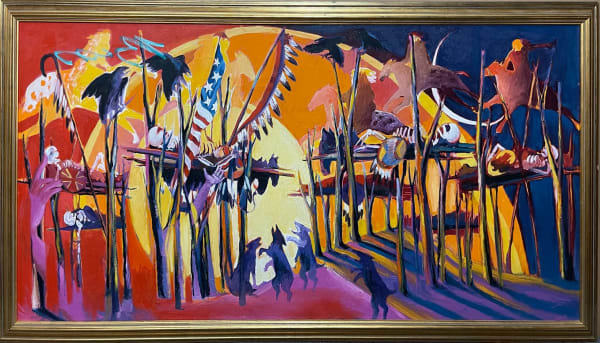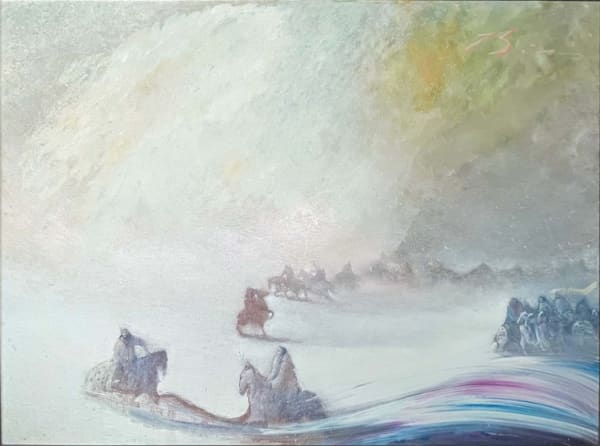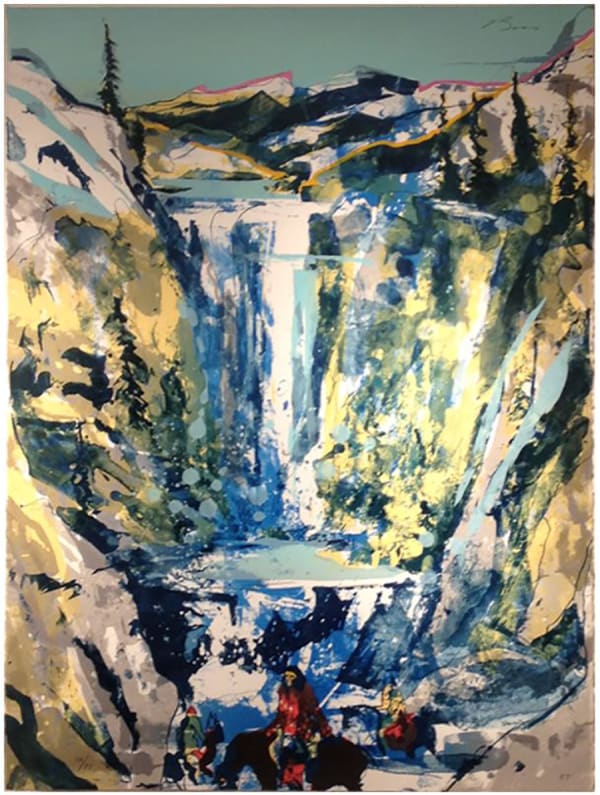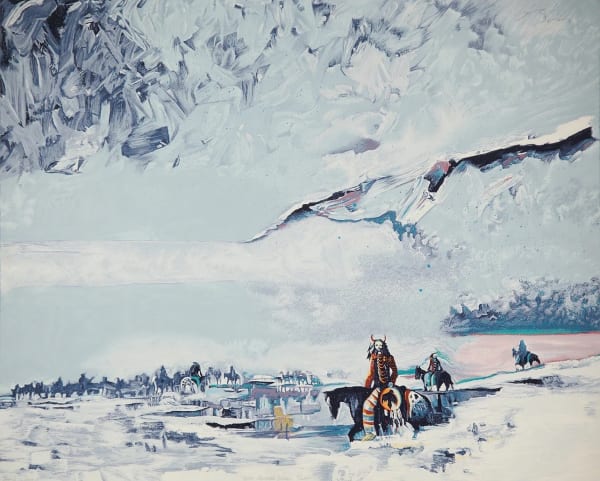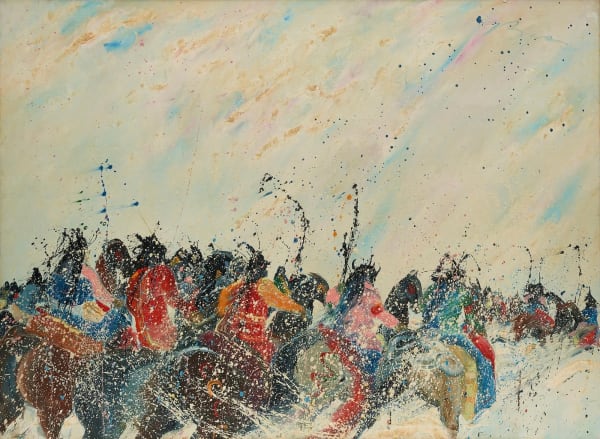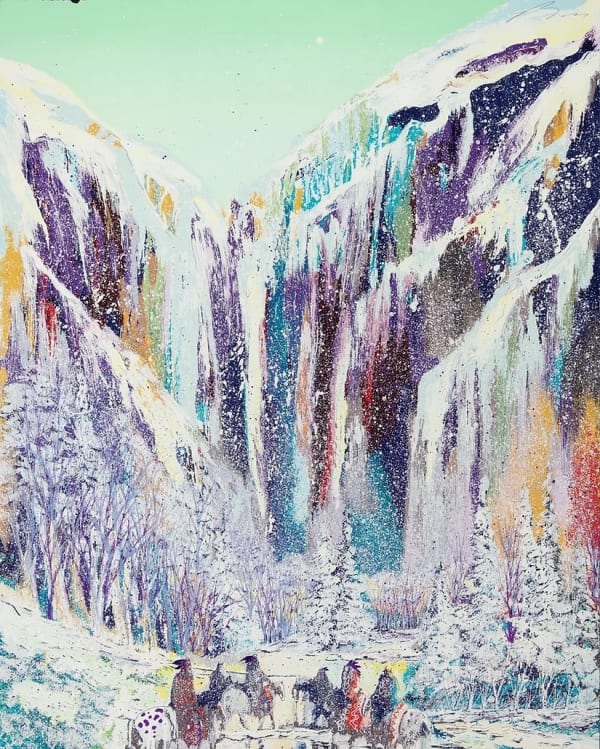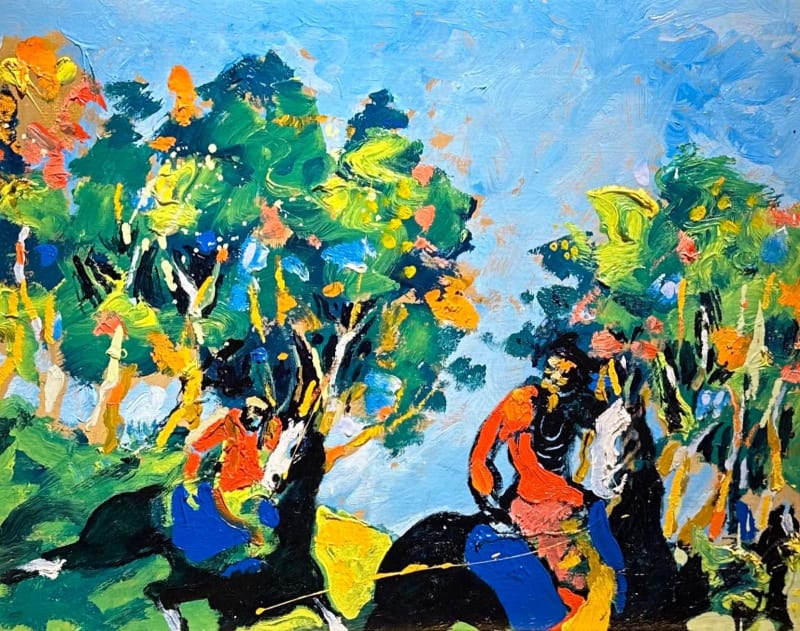Earl Biss
-
 Carriage on a Stormy Afternoon , 1994
Carriage on a Stormy Afternoon , 1994 -
 Apsaalooke March, 1981
Apsaalooke March, 1981 -
 A Bright Afternoon in France
A Bright Afternoon in France -
 A Painting for Edvard Munch 1980
A Painting for Edvard Munch 1980 -
 A Portrait of My Great Uncle Curly The Scout
A Portrait of My Great Uncle Curly The Scout -
 A Vision Sketch in Pleasant Oil
A Vision Sketch in Pleasant Oil -
 Aiken Afternoon 1982
Aiken Afternoon 1982 -
 Another Storm Along the Rockies
Another Storm Along the Rockies -
 Appaloosas in a Yellow Blue Sky
Appaloosas in a Yellow Blue Sky -
 As One With the Mist 1990
As One With the Mist 1990 -
 Autumn Mountain Haze
Autumn Mountain Haze -
 Autumn Storm on Crazy Woman Mountains
Autumn Storm on Crazy Woman Mountains -
 Beartooth Range
Beartooth Range -
 Beartooth Range
Beartooth Range -
 Blizzard Along the Beartooth Range
Blizzard Along the Beartooth Range -
 Bringing Children Home from Star School (State II)
Bringing Children Home from Star School (State II) -
 Buggy Riders on a Snowy Day
Buggy Riders on a Snowy Day -
 Camp at the Gap Near Arrow Creek
Camp at the Gap Near Arrow Creek -
 Camp of the Mountain Crows
Camp of the Mountain Crows -
 Carriage with Horses EB10
Carriage with Horses EB10 -
 Changing Leads at a Full Gallop
Changing Leads at a Full Gallop -
 Cotton Woods in Green & Orange 1981
Cotton Woods in Green & Orange 1981 -
 Crazy Dogs in the Sun
Crazy Dogs in the Sun -
 Early Snow in the Beartooth Range
Early Snow in the Beartooth Range -
 End of the Trail
End of the Trail -
 Erotica Schiele-style EB24
Erotica Schiele-style EB24 -
 Erotica Stars and Stripes EB27
Erotica Stars and Stripes EB27 -
 Erotica Two Ladies in Darkness EB25
Erotica Two Ladies in Darkness EB25 -
 Feel Free to Quote EB41
Feel Free to Quote EB41 -
 Five Warriors in Orange 1981
Five Warriors in Orange 1981 -
 High Mountain Camp
High Mountain Camp -
 High Mountain Campground
High Mountain Campground -
 Horse Thieves at Dawn
Horse Thieves at Dawn -
 Impressions in an Autumn Mist 1993
Impressions in an Autumn Mist 1993 -
 Jeering the Dog Eaters
Jeering the Dog Eaters -
 Jockeys Lining Up EB32
Jockeys Lining Up EB32 -
 Land of the Free Home of the Brave
Land of the Free Home of the Brave -
 Landscape in Green
Landscape in Green -
 Late Winter Pass
Late Winter Pass -
 Meeting Thunder Cloud 1983
Meeting Thunder Cloud 1983 -
 Mist Between Day and Night
Mist Between Day and Night -
 Mountain Crows
Mountain Crows -
 Mountain Glory Boys in Blue
Mountain Glory Boys in Blue -
 Oh My God EB36
Oh My God EB36 -
 Once in a Witching Moon, Reflections of Ancestral Images 1991
Once in a Witching Moon, Reflections of Ancestral Images 1991 -
 Parisian Stroll (Stained) EB17
Parisian Stroll (Stained) EB17 -
 Pasa Por Aqui, Death of the White Man EB39
Pasa Por Aqui, Death of the White Man EB39 -
 Passing Windy Point 1979
Passing Windy Point 1979 -
 Poncho in his Sunday Best
Poncho in his Sunday Best -
 Race is On EB33
Race is On EB33 -
 Rainbow Warriors Wandering Through the Autumn
Rainbow Warriors Wandering Through the Autumn -
 Red Lodge
Red Lodge -
 Reflections on Still Waters
Reflections on Still Waters -
 Return of the Raven to the Skokomish 1978
Return of the Raven to the Skokomish 1978 -
 Rhythm of the Restless
Rhythm of the Restless -
 Riders In An Autumn Wind
Riders In An Autumn Wind -
 Riders in the Mist
Riders in the Mist -
 Salmon Fishing on Columbia River
Salmon Fishing on Columbia River -
 Silent Sunrise Morning
Silent Sunrise Morning -
 Single Native Portrait EB6
Single Native Portrait EB6 -
 Spring of the Rainbow Warriors
Spring of the Rainbow Warriors -
 Standing in a Chinook Wind 1996
Standing in a Chinook Wind 1996 -
 Storm on Thunder Mountain
Storm on Thunder Mountain -
 Strolling Lady with Child in the Park EB14
Strolling Lady with Child in the Park EB14 -
 Strolling Lady with Child in the Park EB15
Strolling Lady with Child in the Park EB15 -
 Strolling Through a Poplar Grove at the Base of Black Canyon 1997
Strolling Through a Poplar Grove at the Base of Black Canyon 1997 -
 Sunrise Morning in Purple and Orange Circa 1986
Sunrise Morning in Purple and Orange Circa 1986 -
 Sunrise on the Whistling Waters
Sunrise on the Whistling Waters -
 The Agony of Defeat EB37
The Agony of Defeat EB37 -
 The Day the Water Came 1984
The Day the Water Came 1984 -
 The First Thaw in Blue
The First Thaw in Blue -
 The Green Grass of Home
The Green Grass of Home -
 The Ice Fisherman
The Ice Fisherman -
 The Journey to Find the Rainbow Medicine's Home
The Journey to Find the Rainbow Medicine's Home -
 The Slip 1982
The Slip 1982 -
 They Stood Like the Glory of the Sun
They Stood Like the Glory of the Sun -
 Turn of the Century Indians with New Hats and Old Hats (State II)
Turn of the Century Indians with New Hats and Old Hats (State II) -
 Twilight Walk in the Rain EB19
Twilight Walk in the Rain EB19 -
 Unfinished Painting of an Untold Story 1990
Unfinished Painting of an Untold Story 1990 -
 Untitled
Untitled -
 Untitled
Untitled -
 Untitled - Desperados
Untitled - Desperados -
 Untitled - Four Chiefs, a Dog, and a Boy 1983
Untitled - Four Chiefs, a Dog, and a Boy 1983 -
 Untitled Aspen Trees & The Rockies
Untitled Aspen Trees & The Rockies -
 Untitled Circa 1978
Untitled Circa 1978 -
 Vision of Fog In A Morning 1985
Vision of Fog In A Morning 1985 -
 Walking the Yellowstone
Walking the Yellowstone -
 Walking Upon the Thundering Waters
Walking Upon the Thundering Waters -
 War Flags on Broken Waters
War Flags on Broken Waters -
 War Shields Winter Vision
War Shields Winter Vision -
 Warriors in the Storm 1980
Warriors in the Storm 1980 -
 Watching the Camp 1987
Watching the Camp 1987 -
 Water Lilies with My Mind Deep in the Rainforest
Water Lilies with My Mind Deep in the Rainforest -
 Wind, River, Snow
Wind, River, Snow -
 Yellow Robes in the Crazy Woman Mountains
Yellow Robes in the Crazy Woman Mountains
Earl Biss (1947 – 1998) was a profound contributor to the explosion of Southwestern Art in the last half of the 20th century, and particularly to the rise of contemporary Native American Art. His compelling portraits of Plains Indian horsemen, his phenomenal grasp of the medium of oil painting, and above all the sheer exuberance of his palette and brushwork earned him a place in the history books of modern art. He was, according to one Southwest critic and collector, ‘The greatest colorist of the 20th century.’

Biss was a central figure in the ‘miracle generation’ of students at the Institute of American Indian Arts (IAIA) in Santa Fe in the 1960s. When Earl and his fellow students – which included Kevin Red Star, T.C. Cannon and Doug Hyde – arrived at IAIA, western art was focused on cowboys and landscapes, while Native art was stylized, linear and depictive. (And often produced for the tourist market.)
That perspective was too narrow for Biss, who studied painting with Fritz Scholder, sculpture with Allan Houser, jewelry and design with Charles Loloma and architecture with Paolo Soleri. Inspired by these teachers, as well as fauvism, impressionism, expressionism and other modernist movements, Biss pushed himself and his friends to create an entirely new genre that we know today as Contemporary Southwestern Art. ‘Earl was the catalyst,’ Red Star said, ‘like the agitator in a washing machine.’
Biss went on to the San Francisco Art Institute on a full scholarship, then moved to Paris where he haunted museums and studied printmaking with S. W. Hayter. Returning to Santa Fe, he rented studio space with several of his fellow artists who continually pushed each other to further develop their unique styles.
Even as his career skyrocketed, Earl’s struggle with his dark side intensified. He painted in bursts of 48 or even 72 hours, refusing to eat and working to collapse. When not in the studio, he was famous for his consumption of alcohol and other substances, and for going through nine marriages.
Weakened both by his lifestyle and a childhood bout with rheumatic fever that damaged his heart, Earl Biss died of a stroke in his studio in 1998. His works in the Contemporary Southwestern Art style are now collected worldwide.











